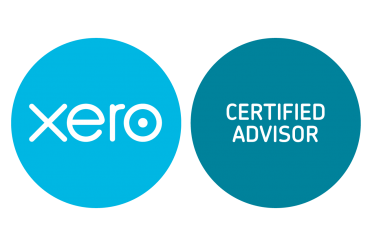
Your Income Statement reveals your business’ ability to generate profits, but it’s your Balance Sheet that lets you know how strong your business’ current financial standing is.
A warning for service and technology companies though: important things aren’t visible on your Balance Sheet and will need to be added if you’re going to get an accurate picture of your financial strength.
What You Can See
Let’s start with what you can see on your Balance Sheet:
- Ability to pay current bills — Look at your current bank balances, then compare them to your Accounts Payable (unpaid vendor bills) plus credit card balances. If they’re the same number (e.g. Cash is $30,000 and bills/credit card balances are also $30,000), then you can pay your current bills (yay!), but you effectively have no cash after that (ohhh). Generally speaking, a ratio of 2:1 or greater indicates a stronger financial standing.
- Ability to weather “profit cycle” — Now take a look at each month’s net cash flow over your profit cycle (typically 12-months). Tally up any cumulative stretches of negative cash flow (e.g., perhaps business is slower in the winter months) — that number determines what “core capital” you should have on hand to help you weather the dry season. In addition to the money you have on hand to pay current bills (described above), gauge whether you also have sufficient “core capital” on hand for the months ahead.
- Cash leaks from profit – Your Accounts Receivable tells you how much customers currently owe you (and has been included in your profit), but the more important question is how much of that will convert to cash. Run an “Accounts Receivable Aging” report, which will breakdown the total into buckets based on how old the customer invoice is. The more those invoices are sliding closer to and past their due dates, the weaker your financial standing is and the more you’ll need to stay on top of it (and possibly consider changes to your pricing strategy).
- Potential need for capital reinvestment – Now take a look at your Fixed Assets (equipment, buildings, etc.) and the related Accumulated Depreciation. As long as you’re not using “accelerated” depreciation on your books, Accumulated Depreciation is a decent gauge on how much of your assets’ life have been “used up”. If they’re both the same number, you’re likely nearing a need for cash to reinvest and refresh the equipment — that’s a third layer of cash to monitor on top of the “current bills” and “core capital” discussed above.
- Weight of your debt burden – Switching to the liability section of your Balance Sheet, divide total liabilities by total equity: this is a measure of how much of the company’s assets are effectively owned by debtors, versus how much owned by you. Industry and business context is important, but generally a debt-to-equity ratio exceeding 1 means your company is probably bending under the weight of its creditors and that a good portion of profits are going to pay principal and interest (weakening your financial standing).
What You Can’t See
All the numbers above are critical and informative, but I’m going to let you in on a little accounting secret: the traditional accounting model is broken. It’s really good at capturing tangible things like money, factories, and inventory, but really bad at capturing intangible things like unique processes, intellectual property, and people power. And nowadays, intangible things are where the future is.
I like to call these things part of your “Invisible Balance Sheet” — it’s not going to show up in your accounting system, but it’s as important, if not more important, than what you’ll see there. Here are some items that might appear on your “Invisible Balance Sheet”:
- Business model expiration date — Your business model is how you create, deliver, and capture value, and it’s built around nine core components with the unique value proposition at the core. Depending on your particular model, your industry, and the wider business environment, the expiration date could be sooner or later — putting a date on that, and evaluating whether you’re responding appropriately as you approach that date, is perhaps the most crucial measure of your financial standing.
- Intellectual property — List out your unique offerings: things you do differently from the competition that creates value for your customer and sets you apart. They could even be codified into things like patents, trademarks, copyrights, or similar. Whether these exist, and how long they’ll give you an edge, is key component of your “invisible balance sheet”
- Human and structural capital — Separately you may have unique internal processes, training programs, and/or team members. These form your human and structural capital — “assets” which won’t show anywhere on the Balance Sheet but will critically determine your business’ success.
- Strategic relationships — How about alliances, joint ventures, and other strategic relationships? To the degree your business has these, its value goes up, despite the fact that they’re not directly reflected on the face of your financial statements.
This isn’t an exhaustive list, but the mere fact of being aware of your invisible Balance Sheet and keeping tabs on it, will separate your business from the field and empower your decisions with greater effectiveness.
Turning Sight into Action
While the Income Statement/Profit & Loss gets a lot of attention for its focus on profit, you can see now how the Balance Sheet provides the equally critical picture of your business’ financial standing.
Some steps to take so you can benefit from these insights and start incorporating them into your decisions: (a) add financial formulas right onto your Balance Sheet in Xero, (b) complement your business management dashboard tool with Balance Sheet measures, (c) develop your own list of “invisible Balance Sheet” factors and display it alongside financial measures on your dashboard, and/or (d) have your CFO regularly report to you on your business’ Balance Sheet (visible and invisible) status.
To gain our team’s help to design and rollout your business’ dashboard, or to regularly leverage our expert CFO insight to enhance your business decisions, just reach out and setup a Coffee Conversation.







